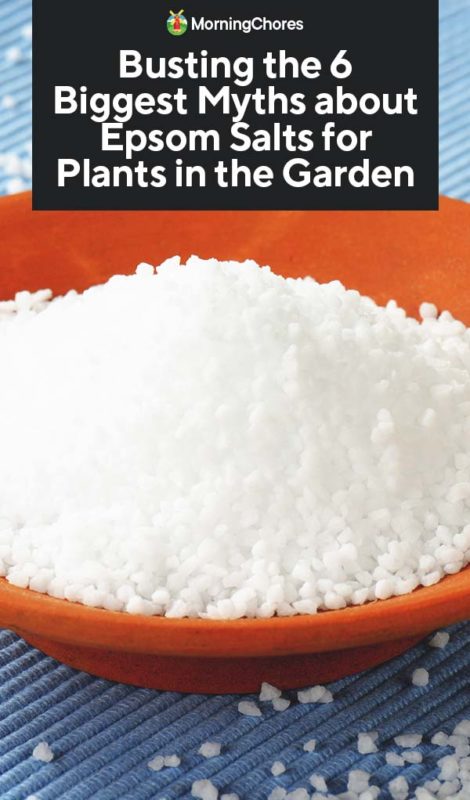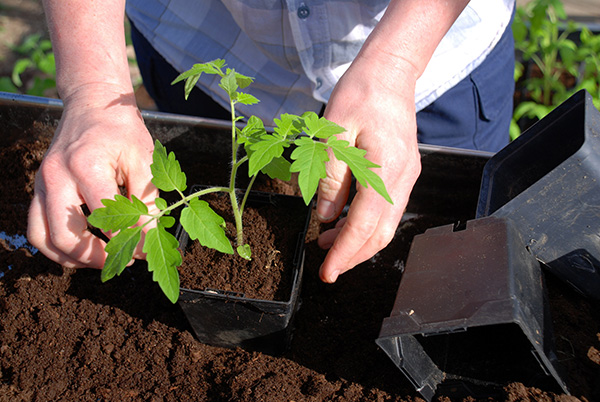Explore Why Some Plants Decline Epsom Salt as a Nutrient Source
In the detailed globe of plant nutrition, the rejection of Epsom salt as a viable nutrient resource by some plants positions an appealing dilemma. Despite its rich magnesium and sulfur web content, particular plant types seem to shun this readily available compound. The factors behind this discerning behavior dig into a complicated interaction of plant absorption devices, the special chemical structure of Epsom salt, and plant-specific nutrient preferences. Comprehending these aspects may lose light on the enigmas of why some plants pull out of utilizing this apparently valuable nutrient source.
Plant Absorption Systems
In delving right into the complex realm of plant absorption devices, it becomes evident that the process is controlled by an advanced interplay of physical dynamics and molecular pathways. Plants soak up nutrients mostly via their roots, utilizing various transport systems to uptake important elements such as nitrogen, phosphorus, potassium, and magnesium. Magnesium, a crucial component in chlorophyll synthesis and enzyme activation, plays a crucial duty in plant growth and advancement.
The absorption of magnesium involves numerous actions, starting with its availability in the soil option. Once liquified, magnesium ions are used up by plant origins via details transport proteins installed in the cell membrane layers. These proteins facilitate the motion of magnesium across the root cell walls and into the plant's vascular system, where it is after that dispersed to various cells to sustain numerous physiological features.
Comprehending the complex devices behind magnesium absorption in plants clarifies just how this important nutrient adds to overall plant health and performance. By enhancing magnesium uptake paths, growers can enhance plant returns and quality, underscoring the value of understanding plant absorption dynamics for sustainable agriculture methods.
Epsom Salt Chemical Framework
The chemical structure of Epsom salt, likewise referred to as magnesium sulfate heptahydrate, exposes an unique plan of aspects that add to its special properties and applications - what plants don't like epsom salt. Epsom salt is made up of magnesium (Mg), sulfur (S), oxygen (O), and hydrogen (H) atoms. The formula MgSO4 · 7H2O indicates that each molecule contains one magnesium atom, one sulfur atom, 4 oxygen atoms, and 14 hydrogen atoms. The presence of water molecules in its structure adds to its solubility in water. The seven water particles are freely adhered to the magnesium sulfate substance, enabling it to liquify quickly in water and be easily used up by plants with their origins.
The crystal framework of Epsom salt creates monoclinic prisms, which are extended crystals with identical ends. This crystal form affects the physical residential properties of Epsom salt, such as its structure and solubility. Understanding the chemical structure of Epsom salt is crucial for understanding its habits as a nutrient source and its interactions with plants in gardening and agricultural techniques.
Plant-Specific Nutrient Preferences
Plants exhibit distinctive choices for particular nutrients, emphasizing the importance of understanding their private demands for optimal growth and advancement. Recognizing these plant-specific nutrient preferences is important for optimizing crop yields, boosting decorative plant growth, and promoting overall plant wellness.

Plant-specific nutrient choices can additionally vary based on whether the plant look at here is a monocot or dicot. Monocots, such as grasses and lilies, have different nutrient demands contrasted to dicots like roses and tomatoes. Additionally, particular plants may show details deficiencies or poisonings when subjected to inadequate or excess degrees of particular nutrients. By tailoring nutrient supplements to meet the specific demands of each plant species, farmers can enhance plant growth, lessen nutrient waste, and support sustainable farming techniques.

Dirt Ph and Nutrient Uptake
Given the crucial duty of plant-specific nutrient choices in maximizing development and wellness, understanding the partnership in check this site out between soil pH and nutrient uptake becomes paramount. Dirt pH plays a critical duty in establishing the availability of necessary nutrients for plant uptake. Various plants have varying pH preferences for ideal nutrient absorption. For instance, acidic soils with a lower pH agree with for plants like azaleas and blueberries, while alkaline soils with a higher pH fit plants such as lilacs and clematis.
Dirt pH influences the chemical kinds of nutrients in the soil. In acidic soils, nutrients like iron, light weight aluminum, and manganese can come to be much more available, yet extreme level of acidity can cause toxicity issues. On the various other hand, alkaline soils might limit the accessibility of nutrients like zinc, copper, and iron, impacting plant growth. Preserving the proper pH level in the dirt is important for making certain that plants can successfully uptake the required nutrients for their healthy development and performance.
Genetic Factors in Nutrient Uptake
In the realm of plant nutrition, the interaction of hereditary variables significantly affects the uptake of important nutrients vital for plant development and growth. Genetic aspects play a crucial role in forming a plant's ability to absorb and use nutrients properly.
Furthermore, hereditary aspects additionally figure out the performance of nutrient uptake devices within plants. For circumstances, some plants might possess genetic traits that improve their ability to scavenge nutrients from the soil successfully, providing them an affordable benefit in nutrient-poor atmospheres. On the various other hand, genetic variations can also lead to restrictions in nutrient uptake, making sure plants extra susceptible to deficiencies also when nutrients are bountiful in the soil.
Comprehending exactly how hereditary variables affect nutrient uptake is browse around these guys important for developing approaches to maximize plant nutrition and improve crop productivity in various agricultural setups. By unwinding the genetic systems associated with nutrient uptake, scientists can work in the direction of developing genetically improved plant selections with enhanced nutrition procurement abilities.
Conclusion

In the intricate world of plant nutrition, the rejection of Epsom salt as a sensible nutrient source by some plants postures a fascinating dilemma. what plants don't like epsom salt. Comprehending these plant-specific nutrient choices is vital for making the most of plant returns, enhancing ornamental plant growth, and promoting total plant health and wellness
By tailoring nutrient supplements to meet the accurate needs of each plant varieties, farmers can optimize plant development, lessen nutrient waste, and assistance lasting agricultural techniques.
In the world of plant nourishment, the interaction of hereditary variables substantially influences the uptake of necessary nutrients crucial for plant development and development. Understanding these complexities in plant nutrient uptake is vital for enhancing plant development and health and wellness in farming techniques.
Comments on “Discover What Plants Don't Like Epsom Salt in Your Yard”